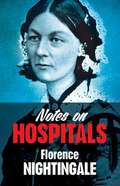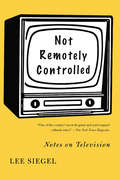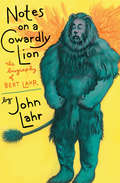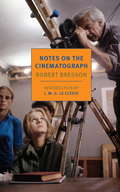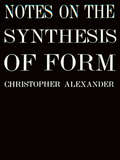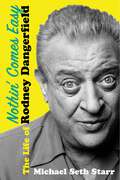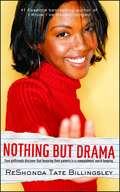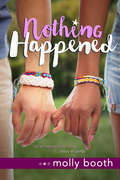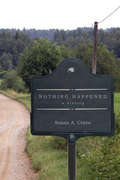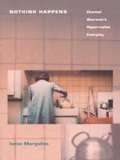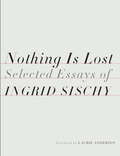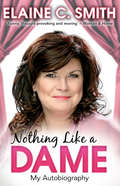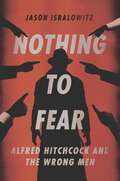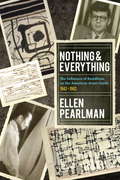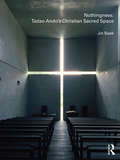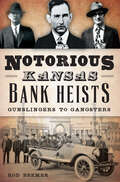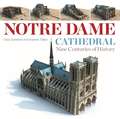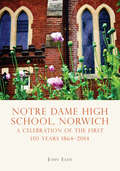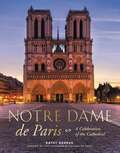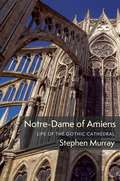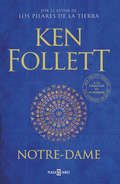- Table View
- List View
Notes on Hospitals: Being Two Papers Read Before The National Association For The Promotion Of Social Science, At Liverpool, In October 1858
by Florence NightingaleThe founder of modern nursing expressed her revolutionary ideas of hospital reform in these two essays, published in 1859 and presented the previous year at the Social Science Congress. During the Crimean War, Florence Nightingale achieved renown as The Lady with the Lamp, the tireless caretaker of wounded soldiers. Afterward, Nightingale searched Europe for innovations to help the army improve its hospital care. This report of her findings and suggestions had a profound effect on the medical community and reestablished the author as an international healthcare authority.Despite the advances in medical knowledge since Nightingale's era, her common-sense approach continues to form a solid foundation for nursing. In these essays she voices the importance of hygiene―fresh air and water, cleanliness, proper drainage, and ample light―as well as ongoing consideration for patients' feelings. Nightingale's ability to effectively articulate her ideas impressed her contemporaries and continues to influence modern readers. This volume serves as a companion to Nightingale's classic of nursing literature, Notes on Nursing: What It Is, and What It Is Not.
Notes on Television: Notes on Television
by Lee SiegelTelevision has taken firm hold of American life ever since the first flickering images replaced the disembodied voices innocently crackling from the radio. Ever present and evolving, television thrives at the crossroads of commerce, art, and entertainment. In Not Remotely Controlled cultural critic Lee Siegel collects his reportage and musings on this most hybrid medium. Whether chronicling the history of the "cop” drama, revealing the inherent irony in Donald Trump’s character on "The Apprentice,” or shedding light on those unheralded gems that Neilsen ratings swept away prematurely, Siegel gives each episode, series, or documentary the attention and respect usually reserved for high-art and dusty literature. Going far beyond mere pans and praise, Siegel has given long-overdue attention to America’s most pervasive art form: television.
Notes on a Cowardly Lion: The Biography of Bert Lahr
by John LahrJohn Lahr&’s stunning and complex biography of his father, the legendary actor and comedian Bert Lahr Notes on a Cowardly Lion is John Lahr&’s masterwork: an all-encompassing biography of his father, the comedian and performer Bert Lahr. Best known as the Cowardly Lion in MGM&’s classic The Wizard of Oz, Lahr was a consummate artist whose career spanned burlesque, vaudeville, Broadway, and Hollywood. While he could be equally raucous and polished in public, Lahr was painfully insecure and self-absorbed in private, keeping his family at arm&’s length as he quietly battled his inner demons. Told with an impressive objectivity and keen understanding of the construction—and destruction—of the performer, Notes on a Cowardly Lion is more than one man&’s quest to understand his father; it is an extraordinary examination of a life in American show business.
Notes on the Cinematograph
by J.M.G. Le Clézio Jonathan Griffin Robert BressonThe French film director Robert Bresson was one of the great artists of the twentieth century and among the most radical, original, and radiant stylists of any time. He worked with nonprofessional actors--models, as he called them--and deployed a starkly limited but hypnotic array of sounds and images to produce such classic works as A Man Escaped, Pickpocket, Diary of a Country Priest, and Lancelot of the Lake. From the beginning to the end of his career, Bresson dedicated himself to making movies in which nothing is superfluous and everything is always at stake. Notes on the Cinematograph distills the essence of Bresson's theory and practice as a filmmaker and artist. He discusses the fundamental differences between theater and film; parses the deep grammar of silence, music, and noise; and affirms the mysterious power of the image to unlock the human soul. This book, indispensable for admirers of this great director and for students of the cinema, will also prove an inspiration, much like Rilke's Letters to a Young Poet, for anyone who responds to the claims of the imagination at its most searching and rigorous.
Notes on the Synthesis of Form
by Christopher Alexander“These notes are about the process of design: the process of inventing things which display new physical order, organization, form, in response to function.” This book, opening with these words, presents an entirely new theory on the process of design.
Nothin' Comes Easy: The Life of Rodney Dangerfield
by Michael Seth StarrThe first-ever biography of the legendary comic and the most improbable rise to fame in the history of American comedy. Getting there wasn&’t always a laughing matter. Rodney Dangerfield&’s fidgety delivery, self-deprecating humor, and catchphrase &“I don&’t get no respect&” made him a comedy icon in nightclubs, on television, and in movies. But Rodney&’s long road to stardom was as rocky as his real life. Born Jacob Cohen in 1921 to a coldhearted mother and absentee father, anxiety-prone Jacob found escape from reality by writing and performing jokes. It led to ten years going nowhere in the &“toilets&” of the club circuit. What followed was marriage, fatherhood, selling aluminum siding, and depression, self-doubt, and debt. That&’s when he decided to give comedy one last shot . . . Back in the clubs and thanks to a fortuitous prime-time set on The Ed Sullivan Show, at the age of 45, the newly christened Rodney Dangerfield was an &“overnight&” success. It was the greatest second act in the history of show business. Rodney mined his insecurities, personal and professional setbacks, and dismal childhood into comedy gold on The Tonight Show Starring Johnny Carson, The Dean Martin Show, The Joey Bishop Show, The Merv Griffin, and The Mike Douglas Show. A generation of new fans discovered him in a string of hit comedies, including Caddyshack, Easy Money, Back to School—he even popped up in Oliver Stone&’s Natural Born Killers. And behind that iconic comedy persona was a caring, compassionate man who took in a hard-luck friend for the rest of his life; a dedicated father who almost single-handedly raised two children; and a selfless and supportive mentor to such up-and-comers as Jerry Seinfeld, Jim Carrey, and George Carlin. Nobody didn&’t love him. An honest, moving, and funny portrait of the real Rodney Dangerfield, Nothin&’ Comes Easy gives the legend, the man, the father, and the friend all the respect he deserves.
Nothing But Drama (Good Girlz #1)
by ReShonda Tate BillingsleyThe first book in an exciting and inspiring new series from national bestselling author ReShonda Tate Billingsley Their lives are nothing but drama. . . . Camille can't believe her bad luck when she's ordered to join a church youth group after hiding her boyfriend from the police. She'll bide her time if that's what it takes to get everyone off her back, but it's the last place she ever expected to make a new friend. Angel has a secret that's got her running scared, so when she sees a flyer for the group, she heads to the church, hoping to find an answer to her problem. Now Rachel, their group leader, has a task for them that may just end their daily dramas and give them a whole new beginning. They just have to take a leap of faith. . . . Along the way, they meet tough-as-nails Jasmine and society-darling Alexis, forging friendships built on strength, loyalty, and faith. As the girls take up Rachel's challenge to honor their parents, they find that walking a new path isn't always the easiest way to go. But together, Camille, Angel, Jasmine, and Alexis will embark on adventures that only the best of friends can share.
Nothing But the Best: The Struggle for Perfection at the Juilliard School
by Judith KoganThe author beautifully describes the formal and informal classes, disturbing auditions, and the corporeal and mental distress that students undergo when reaching for their best at Juilliard.
Nothing Ever Just Disappears: Seven Hidden Queer Histories
by Diarmuid HesterAn exploration of artistic freedom, survival, and the hidden places of the imagination, including James Baldwin in Provence, Josephine Baker in Paris, Kevin Killian in San Francisco, and E. M. Forster in Cambridge, among other groundbreaking queer artists of the twentieth century.Nothing Ever Just Disappears is radical new history of seven queer lives and the places that shaped these groundbreaking artists. At the turn of the century, in the shade of Cambridge's cloisters, a young E. M. Forster conceals his passion for other men, even as he daydreams about the sun-warmed bodies of ancient Greece. Under the dazzling lights of interwar Paris, Josephine Baker dances her way to fame and fortune and discovers sexual freedom backstage at the Folies Bergère. And on Jersey Island, in the darkest days of Nazi occupation, the transgressive surrealist Claude Cahun mounts an extraordinary resistance to save the island she loves, scattering hundreds of dissident artworks along its streets and shorelines. Nothing Ever Just Disappears brings to life the stories of seven remarkable figures and illuminates the connections between where they lived, who they loved, and the art they created. It shows that a queer sense of place is central to the history of the twentieth century and powerfully evokes how much is lost when queer spaces are forgotten. From the suffragettes in London and James Baldwin's home in Provence, to Kevin Killian's San Francisco and Derek Jarman&’s cottage in Kent, this is both a thrilling new literary history and a celebration of freedom, survival, and the hidden places of the imagination.
Nothing Happened
by Molly BoothIT'S MUCH ADO . . . ABOUT EVERYTHING.This modern-day retelling of Shakespeare's Much Ado About Nothing takes place at the idyllic Camp Dogberry, where sisters Bee and Hana Leonato have lived their whole lives. Their parents own the place, and every summer they look forward to leading little campers in crafts, swimming in the lake, playing capture the flag and Sproutball, and of course, throwing legendary counselor parties.This year, the camp drama isn't just on the improv stage. Bee and longtime counselor Ben have a will-they-or-won't-they romance that's complicated by events that happened-or didn't happen-last summer. Meanwhile, Hana is falling hard for the kind but insecure Claudia, putting them both in the crosshairs of resident troublemaker John, who spreads a vicious rumor that could tear them apart.As the counselors juggle their camp responsibilities with simmering drama that comes to a head at the Fourth of July sparkler party, they'll have to swallow their pride and find the courage to untangle the truth, whether it leads to heartbreak or happily ever after.
Nothing Happened: A History
by Susan A. CraneThe past is what happened. History is what we remember and write about that past, the narratives we craft to make sense out of our memories and their sources. But what does it mean to look at the past and to remember that "nothing happened"? Why might we feel as if "nothing is the way it was"? This book transforms these utterly ordinary observations and redefines "Nothing" as something we have known and can remember. "Nothing" has been a catch-all term for everything that is supposedly uninteresting or is just not there. It will take some—possibly considerable—mental adjustment before we can see Nothing as Susan A. Crane does here, with a capital "n." But Nothing has actually been happening all along. As Crane shows in her witty and provocative discussion, Nothing is nothing less than fascinating. When Nothing has changed but we think that it should have, we might call that injustice; when Nothing has happened over a long, slow period of time, we might call that boring. Justice and boredom have histories. So too does being relieved or disappointed when Nothing happens—for instance, when a forecasted end of the world does not occur, and millennial movements have to regroup. By paying attention to how we understand Nothing to be happening in the present, what it means to "know Nothing" or to "do Nothing," we can begin to ask how those experiences will be remembered. Susan A. Crane moves effortlessly between different modes of seeing Nothing, drawing on visual analysis and cultural studies to suggest a new way of thinking about history. By remembering how Nothing happened, or how Nothing is the way it was, or how Nothing has changed, we can recover histories that were there all along.
Nothing Happens: Chantal Akerman’s Hyperrealist Everyday
by Ivone MarguliesThrough films that alternate between containment, order, and symmetry on the one hand, and obsession, explosiveness, and a lack of control on the other, Chantal Akerman has gained a reputation as one of the most significant filmmakers working today. Her 1975 film Jeanne Dielman, 23 Quai du Commerce, 1080 Bruxelles is widely regarded as the most important feminist film of that decade. In Nothing Happens, Ivone Margulies presents the first comprehensive study of this influential avant-garde Belgian filmmaker.Margulies grounds her critical analysis in detailed discussions of Akerman's work--from Saute ma ville, a 13-minute black-and-white film made in 1968, through Jeanne Dielman and Je tu il elle to the present. Focusing on the real-time representation of a woman's everyday experience in Jeanne Dielman, Margulies brings the history of social and progressive realism and the filmmaker's work into perspective. Pursuing two different but related lines of inquiry, she investigates an interest in the everyday that stretches from postwar neorealist cinema to the feminist rewriting of women's history in the seventies. She then shows how Akerman's "corporeal cinema" is informed by both American experiments with performance and duration and the layerings present in works by European modernists Bresson, Rohmer, and Dreyer. This analysis revises the tired opposition between realism and modernism in the cinema, defines Akerman's minimal-hyperrealist aesthetics in contrast to Godard's anti-illusionism, and reveals the inadequacies of popular characterizations of Akerman's films as either simply modernist or feminist. An essential book for students of Chantal Akerman's work, Nothing Happens will also interest international film critics and scholars, filmmakers, art historians, and all readers concerned with feminist film theory.
Nothing Is Lost: Selected Essays
by Laurie Anderson Ingrid SischyFrom the late editor, writer, and critic, one of the great chroniclers of the art, fashion, and celebrity scenes: an expansive collection of thirty-five essays that offer an intimate look into the worlds of some of the most important and well-known artists, designers, and actors of our time.For more than three decades, Ingrid Sischy's profiles and critical essays have been admired for their keen observation and playful style. Many of the pieces that appeared in The New York Times Magazine, The New Yorker, and Vanity Fair from the 1980s to 2015 are gathered here for the first time, including her masterful profiles of Nicole Kidman, Kristen Stewart, Miuccia Prada, Calvin Klein, Jeff Koons, Jean Pigozzi, Alice Neel, and Francesco Clemente, among others, as well as her exclusive interview with John Galliano after his career nose-dived in 2011. Whether writing about a young Alexander McQueen, the photography of Robert Mapplethorpe, Sebastião Salgado, Cindy Sherman, or Bob Richardson, or the Japanese musical theater group Takarazuka Revue, Sischy's close attention to the unexpectedly telling detail results in vividly crafted, incisive portraits of individuals and their works. Here is a unique collection that gives readers unprecedented access to a dazzling range of artists from one of the greatest cultural critics of a generation.
Nothing Like a Dame: My Autobiography
by Elaine C Smith'How did I end up here?' A question Elaine C. Smith asked herself when sitting in the dressing-room of a top theatre in London's West End, about to go on stage with one of the UK's most successful plays.In Nothing Like a Dame, Elaine reflects on a 50-year journey that took her to the peak of the entertainment world. She recounts her long struggle to make it in a male-dominated, working-class society when women were supposed to just shut up and stay thin, especially in the sexist world of theatre and television, where she was told, 'Look, women just aren't funny.'Despite many highs and lows, she proceeded to forge a stellar career in show business, hosting her own TV series and becoming a household name thanks to her comic portrayal of Mary Nesbitt, the long-suffering wife in the award-winning BBC comedy Rab C. Nesbitt.Nothing Like a Dame is a heart-warming memoir: candid, outspoken, hilarious and at times deeply sad.
Nothing Permanent: Modern Architecture in California
by Todd CronanA critical look at the competing motivations behind one of modern architecture&’s most widely known and misunderstood movements Although &“mid-century modern&” has evolved into a highly popular and ubiquitous architectural style, this term obscures the varied perspectives and approaches of its original practitioners. In Nothing Permanent, Todd Cronan displaces generalizations with a nuanced intellectual history of architectural innovation in California between 1920 and 1970, uncovering the conflicting intentions that would go on to reshape the future of American domestic life.Focusing on four primary figures—R. M. Schindler, Richard Neutra, and Charles and Ray Eames—Nothing Permanent demonstrates how this prolific era of modern architecture in California, rather than constituting a homogenous movement, was propelled by disparate approaches and aims. Exemplified by the twin pillars of Schindler and Neutra and their respective ideological factions, these two groups of architects represent opposing poles of architectural intentionality, embodying divergent views about the dynamic between interior and exterior, the idea of permanence, and the extent to which architects could exercise control over the inhabitants of their structures.Looking past California modernism&’s surface-level idealization in present-day style guides, home decor publications, films, and television shows, Nothing Permanent details the intellectual, aesthetic, and practical debates that lie at the roots of this complex architectural moment. Extracting this period from its diffusion into visual culture, Cronan argues that mid-century architecture in California raised questions about the meaning of architecture and design that remain urgent today.
Nothing To Fear: Alfred Hitchcock And The Wrong Men
by Jason IsralowitzA fascinating, meticulously researched deep dive into one of Alfred Hitchcock's most underappreciated films, The Wrong Man, and America's shameful history of wrongful convictions leading up to the real-life event upon which the film is based. &“Thanks to Jason Isralowitz for finally writing a book about Hitchcock&’s most under-appreciated movie. Isralowitz brilliantly contextualizes the movie and the true-life story of Manny Balestrero, preceded by an eye-opening prologue detailing the justice system&’s long history of indicting &‘the wrong man&’ (and, in a few cases, &‘the wrong woman&’). A must for both cinephiles and true crime buffs.&” Bruce Goldstein, Repertory Artistic Director, Film Forum, New York. &“Nothing to Fear is a fascinating history, not only for fans of Hitchcock but for anyone interested in how our justice system works (and sometimes doesn't). The story of &‘the wrong man' continues to resonate well into the twenty-first century, and will make you question your assumptions about innocence and guilt.&” Dawn Raffel, author of The Strange Case of Dr. Couney, named by NPR as one of 2018&’s Great Reads and winner of a 2019 Christopher Award. Alfred Hitchcock is not often associated with a social justice movement. But in 1956, the world&’s most famous director focused his lens on an issue that cuts to the heart of our criminal justice system: the risk of wrongful conviction. The result was The Wrong Man, a wrenching and largely overlooked drama based on the real-life arrest of Queens musician Christopher &“Manny&” Balestrero for two robberies he did not commit. With documentary-like authenticity, Hitchcock and his team meticulously re-created Manny&’s journey through the corridors of justice and the devastating effect of the arrest on his wife, Rose. In so doing, the director cast a damning light on New York&’s history of mistaken identity cases. The Balestreros fell victim to the same rush to judgment and suggestive eyewitness identification procedures that had doomed innocent defendants in earlier cases. Their ordeal is part of a larger story of the state&’s failure to reckon with its role in other wrongful prosecutions in the first half of the twentieth century. Attorney Jason Isralowitz tells this story in a revelatory book that situates both the Balestrero case and its cinematic counterpart in their historical context. Drawing from archival records, Isralowitz delivers a gripping account of Manny&’s trial and new insights into an errant prosecution. He then examines how Hitchcock fused striking visual motifs with social realism to create a timeless work of art. The film bears witness to issues that animate the contemporary innocence movement, including the unreliability of eyewitness testimony, the need for police lineup reforms, and the dangers of investigative &“tunnel vision.&” Given the hundreds of exonerations of the wrongfully convicted in recent years, The Wrong Man remains as timely as ever.
Nothing and Everything - The Influence of Buddhism on the American Avant Garde
by Ellen PearlmanIn America in the late 1950s and early 60s, the world--and life itself--became a legitimate artist's tool, aligning with Zen Buddhism's emphasis on "enlightenment at any moment" and living in the now. Simultaneously and independently, parallel movements were occurring in Japan, as artists there, too, strove to break down artistic boundaries. Nothing and Everything brings these heady times into focus. Author Ellen Pearlman meticulously traces the spread of Buddhist ideas into the art world through the classes of legendary scholar D. T. Suzuki as well as those of his most famous student, composer and teacher John Cage, from whose teachings sprouted the art movement Fluxus and the "happenings" of the 1960s. Pearlman details the interaction of these American artists with the Japanese Hi Red Center and the multi-installation group Gutai. Back in New York, abstract-expressionist artists founded The Club, which held lectures on Zen and featured Japan's first abstract painter, Saburo Hasegawa. And in the literary world, Jack Kerouac and Allen Ginsburg were using Buddhism in their search for new forms and visions of their own. These multiple journeys led to startling breakthroughs in artistic and literary style--and influenced an entire generation. Filled with rare photographs and groundbreaking primary source material, Nothing and Everything is the definitive history of this pivotal time for the American arts.About the Imprint: EVOLVER EDITIONS promotes a new counterculture that recognizes humanity's visionary potential and takes tangible, pragmatic steps to realize it. EVOLVER EDITIONS explores the dynamics of personal, collective, and global change from a wide range of perspectives. EVOLVER EDITIONS is an imprint of North Atlantic Books and is produced in collaboration with Evolver, LLC.From the Trade Paperback edition.
Nothingness: Tadao Ando's Christian Sacred Space
by Jin BaekBased around an interview with Tadao Ando, this book explores the influence of the Buddhist concept of nothingness on Ando’s Christian architecture, and sheds new light on the cultural significance of the buildings of one of the world’s leading contemporary architects. Specifically, this book situates Ando’s churches, particularly his world-renowned Church of the Light (1989), within the legacy of nothingness expounded by Kitaro Nishida (1870-1945), the father of the Kyoto Philosophical School. Linking Ando’s Christian architecture with a philosophy originating in Mahayana Buddhism illuminates the relationship between the two religious systems, as well as tying Ando’s architecture to the influence of Nishida on post-war Japanese art and culture.
Notorious Kansas Bank Heists: Gunslingers to Gangsters (True Crime)
by Rod BeemerBank robbers wreaked havoc in the Sunflower State. After robbing the Chautauqua State Bank in 1911, outlaw Elmer McCurdy was killed by lawmen but wasn't buried for sixty-six years. His afterlife can be described only as bizarre. Belle Starr's nephew Henry Starr claimed to have robbed twenty-one banks. The Dalton gang failed in their attempt to rob two banks simultaneously, but others accomplished this in Waterville in 1911. Nearly four thousand known vigilantes patrolled the Sunflower State during the 1920s and 1930s to combat the criminal menace. One group even had an airplane with a .50-caliber machine gun. Join author Rod Beemer for a wild ride into Kansas's tumultuous bank heist history.
Notre Dame Cathedral: Nine Centuries of History
by Andrew Tallon Dany SandronSince its construction, Notre Dame Cathedral has played a central role in French cultural identity. In the wake of the tragic fire of 2019, questions of how to restore the fabric of this quintessential French monument are once more at the forefront. This all-too-prescient book, first published in French in 2013, takes a central place in the conversation. The Gothic cathedral par excellence, Notre Dame set the architectural bar in the competitive years of the third quarter of the twelfth century and dazzled the architects and aesthetes of the Enlightenment with its structural ingenuity. In the nineteenth century, the cathedral became the touchstone of a movement to restore medieval patrimony to its rightful place at the cultural heart of France: it was transformed into a colossal laboratory in which architects Jean-Baptiste Lassus and Eugène-Emmanuel Viollet-le-Duc anatomized structures, dismembered them, put them back, or built them anew—all the while documenting their work with scientific precision.Taking as their point of departure a three-dimensional laser scan of the cathedral created in 2010, architectural historians Dany Sandron and the late Andrew Tallon tell the story of the construction and reconstruction of Notre Dame in visual terms. With over a billion points of data, the scan supplies a highly accurate spatial map of the building, which is anatomized and rebuilt virtually. Fourteen double-page images represent the cathedral at specific points in time, while the accompanying text sets out the history of the building, addressing key topics such as the fundraising campaign, the construction of the vaults, and the liturgical function of the choir. Featuring 170 full-color illustrations and elegantly translated by Andrew Tallon and Lindsay Cook, Notre Dame Cathedral is an enlightening history of one of the world’s most treasured architectural achievements.
Notre Dame Cathedral: Nine Centuries of History
by Andrew Tallon Dany SandronSince its construction, Notre Dame Cathedral has played a central role in French cultural identity. In the wake of the tragic fire of 2019, questions of how to restore the fabric of this quintessential French monument are once more at the forefront. This all-too-prescient book, first published in French in 2013, takes a central place in the conversation. The Gothic cathedral par excellence, Notre Dame set the architectural bar in the competitive years of the third quarter of the twelfth century and dazzled the architects and aesthetes of the Enlightenment with its structural ingenuity. In the nineteenth century, the cathedral became the touchstone of a movement to restore medieval patrimony to its rightful place at the cultural heart of France: it was transformed into a colossal laboratory in which architects Jean-Baptiste Lassus and Eugène-Emmanuel Viollet-le-Duc anatomized structures, dismembered them, put them back, or built them anew—all the while documenting their work with scientific precision.Taking as their point of departure a three-dimensional laser scan of the cathedral created in 2010, architectural historians Dany Sandron and the late Andrew Tallon tell the story of the construction and reconstruction of Notre Dame in visual terms. With over a billion points of data, the scan supplies a highly accurate spatial map of the building, which is anatomized and rebuilt virtually. Fourteen double-page images represent the cathedral at specific points in time, while the accompanying text sets out the history of the building, addressing key topics such as the fundraising campaign, the construction of the vaults, and the liturgical function of the choir. Featuring 170 full-color illustrations and elegantly translated by Andrew Tallon and Lindsay Cook, Notre Dame Cathedral is an enlightening history of one of the world’s most treasured architectural achievements.
Notre Dame de Paris: A Celebration of the Cathedral
by Kathy BorrusOn April 15, 2019, the world looked on in horror as the Notre Dame Cathedral was nearly destroyed in a devastating fire. Notre Dame de Paris: A Celebration of the Cathedraloffers a fascinating look back at nearly nine centuries of this landmark building that has stood as silent witness to some of the most important events in human history.A marvel of Gothic architecture, the cornerstone of Notre Dame Cathedral was laid in 1163, and construction was completed in 1345. For almost nine centuries it has served as a house of worship and refuge-a stalwart soldier that has survived wars and revolutions, hosted royal weddings, coronations, and funerals, and inspired Victor Hugo's literary classic The Hunchback of Notre Dame. With the cathedral wounded but still standing, the world now watches as the rebuilding process gets underway. Notre Dame de Paris: A Celebration of the Cathedralchronicles the history of this landmark building, from its impressive architecture and collection of priceless artifacts to its presence during major world historical events. Through gorgeous, striking, and sometimes rarely seen archival photographs, Notre Dame de Paris: A Celebration of the Cathedralreminds us all why this building has become an unofficial wonder of the world, lodged in the hearts and minds of people around the globe.
Notre-Dame of Amiens: Life of the Gothic Cathedral (Columbiana)
by Stephen MurrayNotre-Dame of Amiens is one of the great Gothic cathedrals. Its construction began in 1220, and artistic production in the Gothic mode lasted well into the sixteenth century. In this magisterial chronicle, Stephen Murray invites readers to see the cathedral as more than just a thing of the past: it is a living document of medieval Christian society that endures in our own time.Murray tells the cathedral’s story from the overlapping perspectives of the social groups connected to it, exploring the ways that the layfolk who visit the cathedral occasionally, the clergy who use it daily, and the artisans who created it have interacted with the building over the centuries. He considers the cycles of human activity around the cathedral and shows how groups of makers and users have been inextricably intertwined in collaboration and, occasionally, conflict. The book travels around and through the spaces of the cathedral, allowing us to re-create similar passages by our medieval predecessors. Murray reveals the many worlds of the cathedral and brings them together in the architectural triumph of its central space. A beautifully illustrated account of a grand, historically and religiously important building from a variety of perspectives and in a variety of time periods, this book offers readers a memorable tour of Notre-Dame of Amiens that celebrates the cathedral’s eight hundredth anniversary.Notre-Dame of Amiens is enhanced by high-resolution images, liturgical music, and animations embedded in an innovative website.
Notre-Dame: A Short History Of The Meaning Of Cathedrals
by Ken Follett«La imagen de Notre-Dame en llamas me dejó aturdido y profundamente afectado. Me encontraba al borde de las lágrimas. Algo de un valor incalculable estaba muriendo ante nuestros ojos. Era una sensación desconcertante, como si la tierra hubiera comenzado a temblar.»Ken Follett En este breve pero fascinante libro, Ken Follett describe las emociones que sintió cuando conoció la tragedia que amenazaba con destruir Notre-Dame de París y recorre, desde los días de su construcción, los momentos históricos determinantes de un edificio que a través de los siglos ha ejercido una fascinación universal. Follett rinde homenaje así a Notre-Dame y revela además la influencia que ha tenido en las catedrales de todo el mundo y en la escritura de su más famosa novela, Los pilares de la Tierra.
